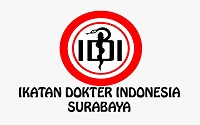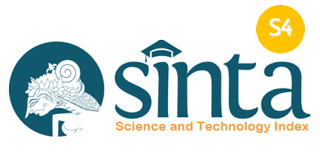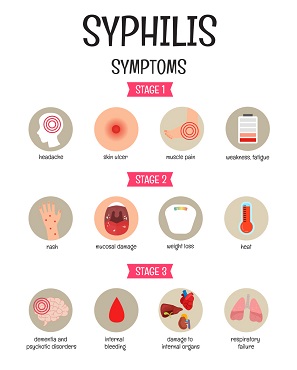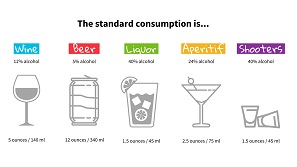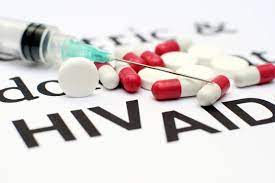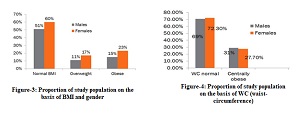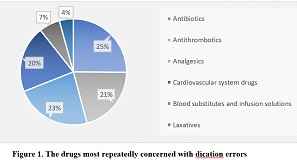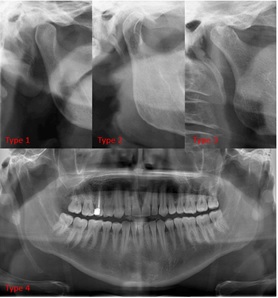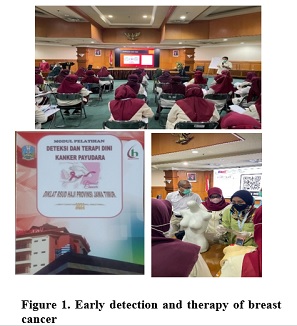The Relationship Between Energy Drinks A and B with Blood Pressure and Pulse Rate Increase Among College Students
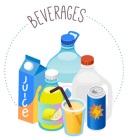
Energy drinks are popular among various groups of people, such as teenagers and working individuals. These beverages are consumed to provide additional energy and improve focus. This research investigates the relationship between energy drinks and blood pressure and heart rate in students of the Faculty of Medicine at Universitas Airlangga, Surabaya, Indonesia. The study used the open trial – randomized cross-over study method and collected primary data through experiments. The sample consisted of students from the Faculty of Medicine at Universitas Airlangga, aged 19 to 22 years, with a normal body mass index ranging from 18.5 to 24.9. The systolic, diastolic, and heart rate values were measured before and after consuming energy drinks. A total of 38 research samples were used, including 22 males (57.8%) and 16 females (42.1%). Energy drinks such as Kratingdaeng and Extra Joss showed a significant increase in blood pressure. However, no significant changes were observed in heart rate. The results of the Wilcoxon statistical test, comparing systolic and diastolic conditions before and after consuming Extra Joss, showed p<0.0001. A significance level of p<0.05 indicates a significant effect of energy drinks on the students. The Wilcoxon test for Kratingdaeng also yielded a p<0.0001. For the p-value through the Wilcoxon test on diastolic values before and after consuming Extra Joss and Kratingdaeng, the result was p<0.05. However, the Wilcoxon test for heart rate before and after consuming Kratingdaeng and Extra Joss had a at p<0.05. In the Mann-Whitney statistical test, a p<0.05 was found only in the post-systolic condition, while other conditions had at p≥0.05. In conclusion, energy drinks significantly affected blood pressure, but no significant changes were observed in heart rate.
INTRODUCTION
Around 1.28 billion adults aged 30-79 worldwide suffer from hypertension, with a significant portion residing in low- and middle-income countries. Approximately 46% of those with hypertension are unaware of their condition. Hypertension is a leading cause of premature death globally11. Basic Health Research of Indonesia reported that the prevalence of hypertension in Indonesia was 34.1% in 2018, up from 25.8% in 2013. Various conditions, such as kidney disease, thyroid disorders, tumors, adrenal gland abnormalities, or vascular issues, can cause hypertension22.Unhealthy lifestyles, including energy drink consumption, can also contribute to increased blood pressure33.
There are cases of palpitations in a 16-year-old boy consuming energy drinks thrice daily for two weeks, even though his blood pressure remains normal44.A 28-year-old athlete experienced a heart attack linked to excessive caffeine-containing energy drink intake55.Deaths and seizures due to excessive energy drink consumption have also been reported66.
A previous study on 27 healthy children and adolescents, averaging 14.53 ± 2.4 years old, showed a significant increase in systolic and diastolic blood pressure after consuming energy drinks77. However, the study indicated a minimal impact on heart rate7.Another study with 44 adults aged 15-30 showed no significant blood pressure changes post-energy drink consumption but a notable decrease in heart rate 30 minutes later88.
Indonesia's energy drink consumption fluctuates yearly, as evident in South Jakarta, where it increased from 19% in 2019 to 26% in 202199. Popular brands like Kratingdaeng, Hemaviton, Extra Joss, Fit-up, and others contain stimulants like caffeine, taurine, and various vitamins1010.Statistics from 2007 show that Extra Joss and Kratingdaeng were favored brands in Indonesia99.
Kratingdaeng and Extra Joss have similar compositions, differing mainly in the presence of royal jelly in Extra Joss. Royal jelly has pharmacological effects, including blood pressure reduction and pulse rate through increased nitric oxide production11,121112.Caffeine triggers adrenaline production, leading to increased blood pressure by competitively antagonizing adenosine receptors. Adenosine, a neuromodulator, affects central nervous system functions, causing vasoconstriction and elevated peripheral resistance1313. Exceeding 400 mg of caffeine, equivalent to four to five cups of coffee daily for healthy adults, can have adverse effects on blood pressure and heart rate1414. The effects of caffeine consumption, felt within 5-30 minutes, can last up to 12 hours, with dosage influencing blood pressure changes1515. With the presence of these issues, the researcher intended to investigate the relationship between energy drinks A (Extra Joss) and B (Kratingdaeng) with the increase in blood pressure and pulse rate in students.
MATERIALS AND METHODS
This study employed the open trial – randomized cross-over study method to investigate the relationship between Extra Joss and Kratingdaeng concerning blood pressure and heart rate in university students. The sample consisted of 38 medical students from Universitas Airlangga in Surabaya, aged between 19 and 22 years, with a normal BMI range of 18.5 – 24.9 from July 2022 to March 2023. The inclusion criteria included students aged 19-22 years with a normal BMI of 18.5 – 24.9. The exclusion criteria involved students with a history of hypertension and habitual energy drink consumption. This research received approval from the Ethical Health Research Committee of Faculty Medicine of Universitas Airlangga, Surabaya, Indonesia, with reference number 246/EC/KEPK/FKUA/2022 on 7 December 2022. The data collected in this study were primary data and obtained directly from the examination of the research subjects. Later, the two groups were subjected to randomization process. Each research subject was assigned a number that was randomly generated using a random number generator. Numbers 1 to 20 were assigned to Group A, while numbers 21 to 38 were assigned to Group B. Subsequently, Group A received Extra Joss, while Group B received Kratingdaeng initially. A washout process was conducted for two weeks to eliminate the caffeine effects in the research participants. Afterward, the given drinks were switched, with Group A receiving Kratingdaeng and Group B receiving Extra Joss. The studied caffeine effect was acuted, lasting for 15 minutes. During data collection, the researcher obtained informed consent from the research subjects. Data analysis used the Wilcoxon and Mann-Whitney tests to analyze the correlation between independent and dependent variables due to different treatments given to the same subjects. Data processing and analysis were conducted using SPSS software (IBM SPSS Statistics) version 26.
RESULTS
In total, 38 students from the Faculty of Medicine, Universitas Airlangga, participated in this research and were included in the analysis. Among these 38 samples, none were taking medications or had any specific medical conditions. The energy drinks consumed by the samples were taken appropriately and did not cause any side effects.
Characteristics (n=38) | Total |
Sex, n (%) | |
Male | 22 (57.8) |
Female | 16 (42.1) |
Age, mean ± SD | 20.02 (0.28) |
Habit, n (%) | |
Rare | 30 (78.9) |
Sometimes | 8 (21.0) |
Systole, mean ± SD | 116.39 ± 6.69 |
Diastole, mean ± SD | 70.97 ± 6.28 |
Pulse rate, mean ± SD | 73.39 ± 9.66 |
The Kolmogorov-Smirnov test indicated a non-normal distribution of parameter values both before and after consuming energy drinks. Therefore, the data were tested using the Mann-Whitney and Wilcoxon tests to substantiate the research hypotheses.
Extra Joss | Kratingdaeng | p-value | |
Pre Systole | 118 (100–135) | 115 (108-130) | p=0.372 |
Pre Diastole |
World Health Organization. Hypertension. [online] Who.int. 2021. Available at: https://www.who.int/news-room/fact-sheets/detail/hypertension. Accessed at December 12, 2022.
Hegde S, Ahmed I, Aeddula NR. Secondary Hypertension. 2023 Jul 30. In: StatPearls [Internet]. Treasure Island (FL): StatPearls Publishing; 2023 Jan–. PMID: 31335025.
Shah SA, Szeto AH, Farewell R, Shek A, Fan D, Quach KN, Bhattacharyya M, Elmiari J, Chan W, O'Dell K, Nguyen N, McGaughey TJ, Nasir JM, Kaul S. Impact of High Volume Energy Drink Consumption on Electrocardiographic and Blood Pressure Parameters: A Randomized Trial. J Am Heart Assoc. 2019 Jun 4;8(11):e011318.
Usman A, Jawaid A. Hypertension in a young boy: an energy drink effect. BMC Res Notes. 2012 Oct 29;5:591.
Berger, A. J., & Alford, K. Clinical record Cardiac arrest in a young man following excess consumption of caffeinated “energy drinks.” In The Medical Journal of Australia. 2009. (Vol. 190). www.wada-ama.org/rtecontent/document/Monitoring_Program_2008_
Clauson KA, Shields KM, McQueen CE, Persad N. Safety issues associated with commercially available energy drinks. J Am Pharm Assoc (2003). 2008 May-Jun;48(3):e55-63; quiz e64-7.
Oberhoffer FS, Li P, Jakob A, Dalla-Pozza R, Haas NA, Mandilaras G. Energy Drinks: Effects on Blood Pressure and Heart Rate in Children and Teenagers. A Randomized Trial. Front Cardiovasc Med. 2022 Mar 21;9:862041.
Hajsadeghi S, Mohammadpour F, Manteghi MJ, Kordshakeri K, Tokazebani M, Rahmani E, Hassanzadeh M. Effects of energy drinks on blood pressure, heart rate, and electrocardiographic parameters: An experimental study on healthy young adults. Anatol J Cardiol. 2016 Feb;16(2):94-9.
Putriastuti R, Kustiyah L, Anwar F. Persepsi, konsumsi dan preferensi minuman berenergi. Jurnal Gizi dan Pangan. 2007 Nov 13;2(3):13-25.
Aditya MF, Kasiyati K, Isdadiyanto S, Tana S, Sunarno S. Efek Minuman Berenergi Terhadap Histopatologi Hepar Tikus Wistar (Rattus norvegicus). Media Bina Ilmiah. 2021 Jan 31;15(7):4849-60.
Pasupuleti VR, Sammugam L, Ramesh N, Gan SH. Honey, Propolis, and Royal Jelly: A Comprehensive Review of Their Biological Actions and Health Benefits. Oxid Med Cell Longev. 2017;2017:1259510.
Pan Y, Rong Y, You M, Ma Q, Chen M, Hu F. Royal jelly causes hypotension and vasodilation induced by increasing nitric oxide production. Food Sci Nutr. 2019 Feb 17;7(4):1361-1370.
Firmansyah MR, Rustam R. Hubungan Merokok dan Konsumsi Kopi dengan Tekanan Darah pada Pasien Hipertensi. Jurnal Kesehatan. 2017 Aug 31;8(2):263-8.
FDA. Spilling the Beans: How Much Caffeine is Too Much? [online] U.S. Food and Drug Administration. 2018. Available at: https://www.fda.gov/consumers/consumer-updates/spilling-beans-how-much-caffeine-too-much.
Bistara DN, Kartini Y. Hubungan kebiasaan mengkonsumsi kopi dengan tekanan darah pada dewasa muda. Jurnal Kesehatan Vokasional (JKESVO). 2018;3(1):23-8.
Cao DX, Maiton K, Nasir JM, Estes NAM, Shah SA. Energy Drink-Associated Electrophysiological and Ischemic Abnormalities: A Narrative Review. Front Cardiovasc Med. 2021 Jul 1;8:679105.
Steinke L, Lanfear DE, Dhanapal V, Kalus JS. Effect of "energy drink" consumption on hemodynamic and electrocardiographic parameters in healthy young adults. Ann Pharmacother. 2009 Apr;43(4):596-602.
Kozik TM, Shah S, Bhattacharyya M, Franklin TT, Connolly TF, Chien W, Charos GS, Pelter MM. Cardiovascular responses to energy drinks in a healthy population: The C-energy study. Am J Emerg Med. 2016 Jul;34(7):1205-9.
Alford C, Cox H, Wescott R. The effects of red bull energy drink on human performance and mood. Amino Acids. 2001;21(2):139-50.
Rashti SL, Ratamess NA, Kang J, Faigenbaum AD, Chilakos A, Hoffman JR. Thermogenic effect of meltdown RTD energy drink in young healthy women: a double blind, cross-over design study. Lipids Health Dis. 2009 Dec 17;8:57.
Ragsdale FR, Gronli TD, Batool N, Haight N, Mehaffey A, McMahon EC, Nalli TW, Mannello CM, Sell CJ, McCann PJ, Kastello GM, Hooks T, Wilson T. Effect of Red Bull energy drink on cardiovascular and renal function. Amino Acids. 2010 Apr;38(4):1193-200.
Nelson, M. T., Biltz, G. R., & Dengel, D. R. Cardiovascular and ride time-to-exhaustion effects of an energy drink. 2014. http://www.jissn.com/content/11/1/2
An SM, Park JS, Kim SH. Effect of energy drink dose on exercise capacity, heart rate recovery and heart rate variability after high-intensity exercise. J Exerc Nutrition Biochem. 2014 Mar;18(1):31-9.
Grasser EK, Yepuri G, Dulloo AG, Montani JP. Cardio- and cerebrovascular responses to the energy drink Red Bull in young adults: a randomized cross-over study. Eur J Nutr. 2014 Oct;53(7):1561-71.
Olateju T, Begley J, Green DJ, Kerr D. Physiological and glycemic responses following acute ingestion of a popular functional drink in patients with type 1 diabetes. Can J Diabetes. 2015 Feb;39(1):78-82.
Cavka A, Stupin M, Panduric A, Plazibat A, Cosic A, Rasic L, Debeljak Z, Martinovic G, Drenjancevic I. Adrenergic System Activation Mediates Changes in Cardiovascular and Psychomotoric Reactions in Young Individuals after Red Bull (©) Energy Drink Consumption. Int J Endocrinol. 2015;2015:751530.
Elitok A, Öz F, Panc C, Sarıkaya R, Sezikli S, Pala Y, Bugan ÖS, Ateş M, Parıldar H, Ayaz MB, Atıcı A, Oflaz H. Acute effects of Red Bull energy drink on ventricular repolarization in healthy young volunteers: a prospective study. Anatol J Cardiol. 2015 Nov;15(11):919-22.
Mandilaras G, Li P, Dalla-Pozza R, Haas NA, Oberhoffer FS. Energy Drinks and Their Acute Effects on Heart Rhythm and Electrocardiographic Time Intervals in Healthy Children and Teenagers: A Randomized Trial. Cells. 2022 Jan 31;11(3):498.
Corti R, Binggeli C, Sudano I, Spieker L, Hänseler E, Ruschitzka F, Chaplin WF, Lüscher TF, Noll G. Coffee acutely increases sympathetic nerve activity and blood pressure independently of caffeine content: role of habitual versus nonhabitual drinking. Circulation. 2002 Dec 3;106(23):2935-40.
Bichler A, Swenson A, Harris MA. A combination of caffeine and taurine has no effect on short term memory but induces changes in heart rate and mean arterial blood pressure. Amino Acids. 2006 Nov;31(4):471-6.
Li P, Mandilaras G, Jakob A, Dalla-Pozza R, Haas NA, Oberhoffer FS. Energy Drinks and Their Acute Effects on Arterial Stiffness in Healthy Children and Teenagers: A Randomized Trial. J Clin Med. 2022 Apr 7;11(8):2087.
McCorry, L.K. (2007). Physiology of the Autonomic Nervous System. American Journal of Pharmaceutical Education, [online] 71(4), p.78. doi:https://doi.org/10.5688/aj71047.
Tindle J, Tadi P. Neuroanatomy, Parasympathetic Nervous System. 2022 Oct 31. In: StatPearls [Internet]. Treasure Island (FL): StatPearls Publishing; 2023 Jan–. PMID: 31985934.
Heart Rate | Sports Medicine | UC Davis Health. (n.d.). Retrieved October 28, 2023, from https://health.ucdavis.edu/sports-medicine/resources/heart-rate
Mahmud A, Feely J. Acute effect of caffeine on arterial stiffness and aortic pressure waveform. Hypertension. 2001 Aug;38(2):227-31.
Azuma, J., Schaffer, S. W., & Ito, T. (Eds.). (2009). Taurine 7 (Vol. 643). Springer New York. https://doi.org/10.1007/978-0-387-75681-3
Pan Y, Rong Y, You M, Ma Q, Chen M, Hu F. Royal jelly causes hypotension and vasodilation induced by increasing nitric oxide production. Food Sci Nutr. 2019 Feb 17;7(4):1361-1370.
Liang Y, Kagota S, Maruyama K, Oonishi Y, Miyauchi-Wakuda S, Ito Y, Yamada S, Shinozuka K. Royal jelly increases peripheral circulation by inducing vasorelaxation through nitric oxide production under healthy conditions. Biomed Pharmacother. 2018 Oct;106:1210-1219.
Committee on Nutrition and the Council on Sports Medicine and Fitness. Sports drinks and energy drinks for children and adolescents: are they appropriate? Pediatrics. 2011 Jun;127(6):1182-9.
Zucconi, S., Volpato, C., Adinolfi, F., Gandini, E., Gentile, E., Loi, A., & Fioriti, L. Gathering consumption data on specific consumer groups of energy drinks. 2017. EFSA Supporting Publications, 10(3). https://doi.org/10.2903/sp.efsa.2013.en-394
Copyright (c) 2024 Narendra Arya Setiabudi

This work is licensed under a Creative Commons Attribution-ShareAlike 4.0 International License.
- The journal allows the author to hold the copyright of the article without restrictions.
- The journal allows the author(s) to retain publishing rights without restrictions.
- The legal formal aspect of journal publication accessibility refers to Creative Commons Attribution Share-Alike (CC BY-SA).
- The Creative Commons Attribution Share-Alike (CC BY-SA) license allows re-distribution and re-use of a licensed work on the conditions that the creator is appropriately credited and that any derivative work is made available under "the same, similar or a compatible license”. Other than the conditions mentioned above, the editorial board is not responsible for copyright violation.






